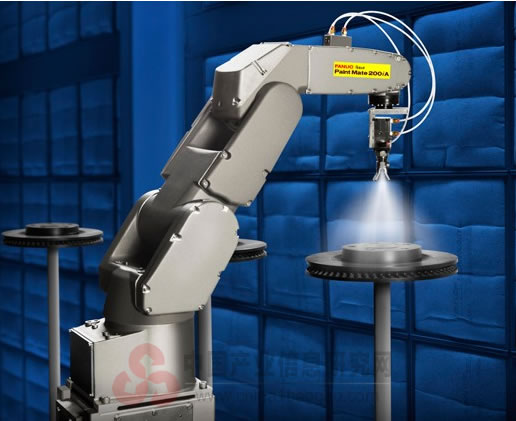With the rapid development of the robot industry, industrial robots have been widely used in various industries, from material handling to machine maintenance, from welding to cutting, from assembly to spraying, we have found that these industrial robots have different shapes and different functional properties. So, what determines the flexibility and range of activity of industrial robots? This problem is more complicated, but there is a key factor that largely determines the flexibility and range of motion of the robot, that is, the degree of freedom of industrial robots, usually Also called the number of axes.
What is the freedom of industrial robots?
Usually used as a technical indicator of the robot, reflecting the flexibility of the robot's motion, it can be expressed by the number of linear movements, swings or rotations of the shaft. The number of joints that the robot mechanism can move independently, called the freedom of motion of the robot mechanism, referred to as Degree of Freedom, is abbreviated by DOF. At present, the control method adopted by industrial robots is to treat each joint on the robot arm as a single servo mechanism, that is, each axis corresponds to one servo, and each servo is controlled by the bus, and the controller uniformly controls and coordinates the work.

IS08373 explains industrial robots: "Robots have automatic control and reprogrammable, multi-purpose functions. Robotic manipulators have three or more programmable axes. In industrial automation applications, the base of the robot can be fixed or moved. ". It can be seen that the number of axes of industrial robots is an important technical indicator.
The use of robots with different degrees of freedom in the industry <br> The number of robot axes determines their degree of freedom. Is the degree of freedom as much as possible? The more freedom, the closer it is to the movement function of the human hand, the better the versatility; but the more degrees of freedom, the more complex the structure, the higher the overall requirements for the robot, this is the robot A contradiction in the design. As the number of axes increases, so does the flexibility of the robot. However, in current industrial applications, the most commonly used are three-axis, four-axis, five-axis, and six-axis industrial robots, and the choice of the number of axes usually depends on the specific application. This is because, in some applications, high flexibility is not required, and three- and four-axis robots are more cost-effective, and three- and four-axis robots also have great speed advantages. A four-axis robot is sufficient if you are only doing some simple applications, such as picking up parts between conveyor belts. If the robot needs to work in a small space and the robot arm needs to be twisted and reversed, a six- or seven-axis robot is the best choice.
Six-axis robots are currently the most widely used in the industrial field. The industrial robot with six joints is very similar to the human arm. It has the equivalent of the shoulder, elbow and wrist. Its "shoulder" is usually mounted on a fixed base structure. The role of the human arm is to move the hand to a different position, while the six-axis robot functions as a moving end effector that mounts various actuators at the end of the arm for specific application scenarios, such as claws, blowtorets, drill bits and Paint sprayers, etc., to complete different work tasks.
Recently, various robot manufacturers have released the latest human-machine collaboration robots, almost all of which use seven-axis redundant degree of freedom industrial robots. Internationally renowned robot manufacturers have launched new products for seven-axis robots to seize high-end new markets, but the truly commercial seven-axis industrial robots are compared with traditional four-axis and six-axis industrial robots. The gap is much more obvious than the current one.
Trends in redundant degrees of freedom robots <br> Six degrees of freedom are the minimum number of degrees of freedom to complete spatial positioning. More than six axes of robots are collectively referred to as redundant degrees of freedom. Robot kinematics research aims to solve the movement or rotational movement of each joint when the end effector of the robot arm reaches a certain position in space, which is the cornerstone and key of the whole robotics. With the rapid development of human civilization, the work in many industries, high-altitude, deep-sea, nuclear waste and dangerous working environments requires robots to complete, which puts higher reliability, operability and intelligence for robot motion control. Claim. In the future, with its increasing precision, redundant degrees of freedom robots have more advantages in obstacle avoidance, overcoming singularities, flexibility and fault tolerance. In the face of complex working environments and changing operational requirements, redundant freedom Industrial robots will have more use. I believe that in the near future, it will replace manual labor for more precise operations.
Industrial LCD Monitor / Computer
Industrial Touch Monitor which has strong waterproof ability, and fully meets the dustproof and waterproof standards. When it is installed in a control cabinet, it can prevent water droplets and water vapor from splashing into the site and avoid affecting the operation of the equipment. In addition, it also has excellent heat dissipation. Many industrial touch monitors are made of aluminum alloy, which is not only beautiful and texture, but also the heat dissipation performance of the product has been improved.
industrial all in one,industrial display,industrial lcd monitors,industrial computers,open frame monitors,touch screen monitor
Shenzhen Hengstar Technology Co., Ltd. , https://www.angeltondal.com